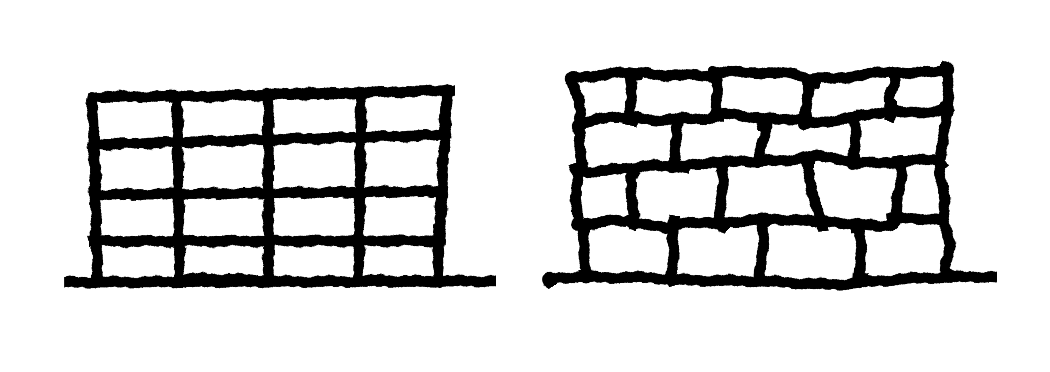Property 4 — Alternating Repetition
Alternating Repetition is introduced in
Square grids are a typical result of splitting sequences from other splittings along a second dimension. They create rectangular grids that feel a little too flexible when realised.
Repetition is natural, and grids are common, but even more natural than these are where the grid has relaxed into something where the tiniest irregularities are de-stressed by being aligned to an off-beat. Consider the difference between a rectangular grid and a hexagonal grid. One is easy to work with, but the other is more satisfying to behold.
There are no triangles in square grids, so they are just waiting to fold up on themselves. However, the hexagon or triangular field is sturdy, or at least looks that way. Hexagons remind us of stacks of circles, which pack naturally into alternating layers. Triangles are triangles, and we immediately see them as sturdy.
 Hexagon grid and square grid.
Hexagon grid and square grid.
Bricks are rectangles, so they look terribly fragile when laid out in a grid, but note how swiftly we change our mind when we layer them as per a wall with alternating placement. Even when a regular grid is pristine and well-engineered, it looks weak and unsettled compared to a roughly realised alternating form.
 Two brick walls, one regular, one alternating.
Two brick walls, one regular, one alternating.
Scales on a fish[NoO1-01], the way the weave of fabric goes under and over, the teeth of a zipper, the in and out of jigsaw puzzle pieces, and the directions of alternating tiles in herringbone paving, are all examples of the same kind of strong pattern of interleaving by alternating repetition.
The alternation does not just need to be about structure but can also be about usage. We build small shops into our communities by interleaving commercial and residential. We plan out land with stopping and going as the alternation, with paths punctuated by points where things come together. We string focal points[APL77] such as monuments, ponds, and playgrounds together with paving, roads, and dirt tracks—an alternating pattern of movement and stillness in relatively similar quantities.